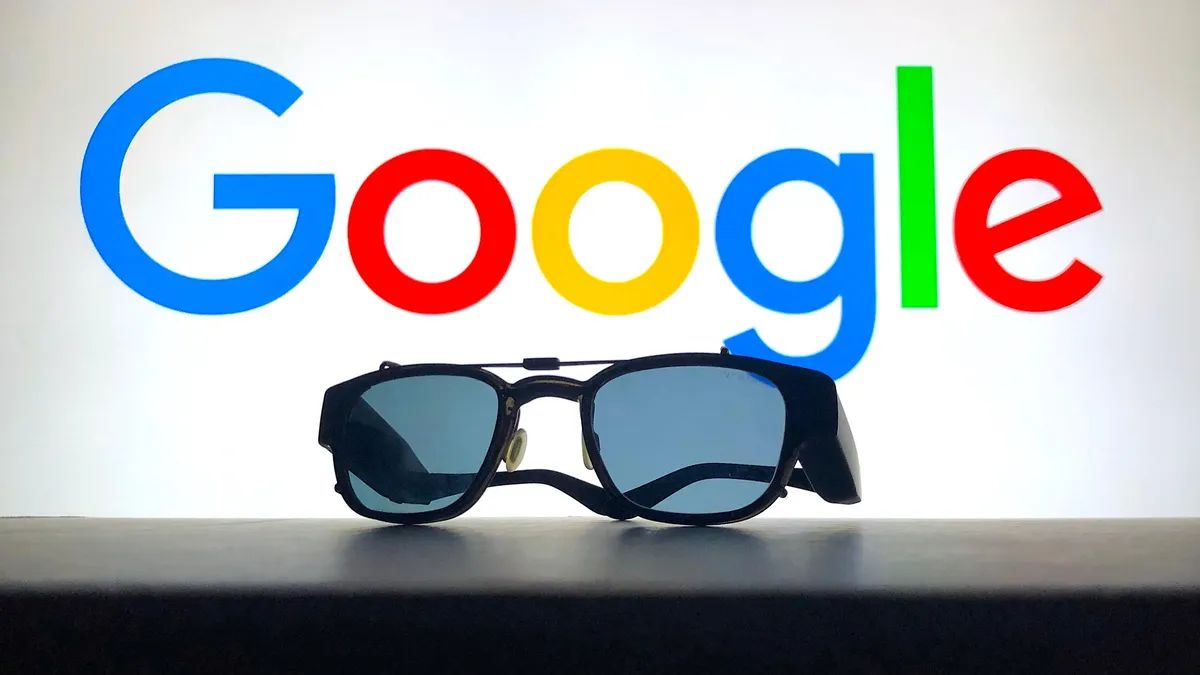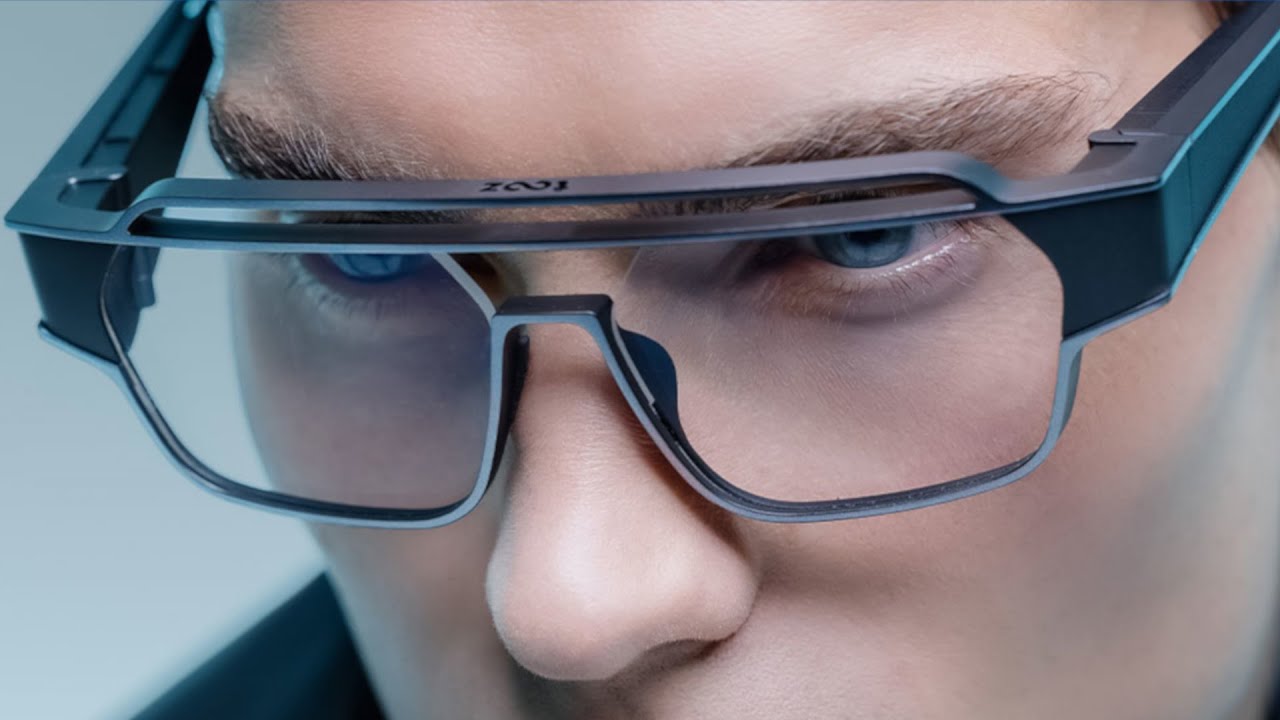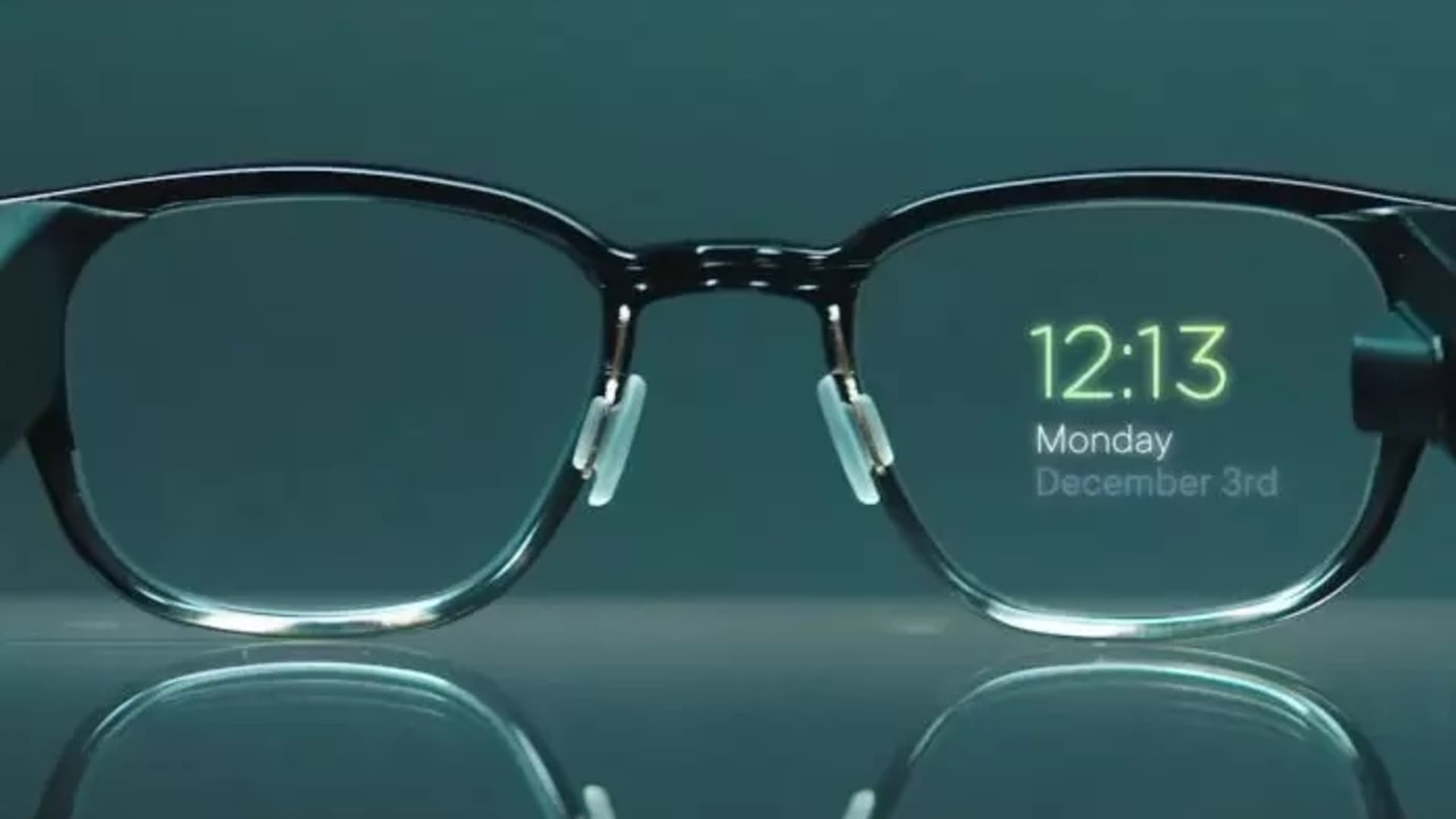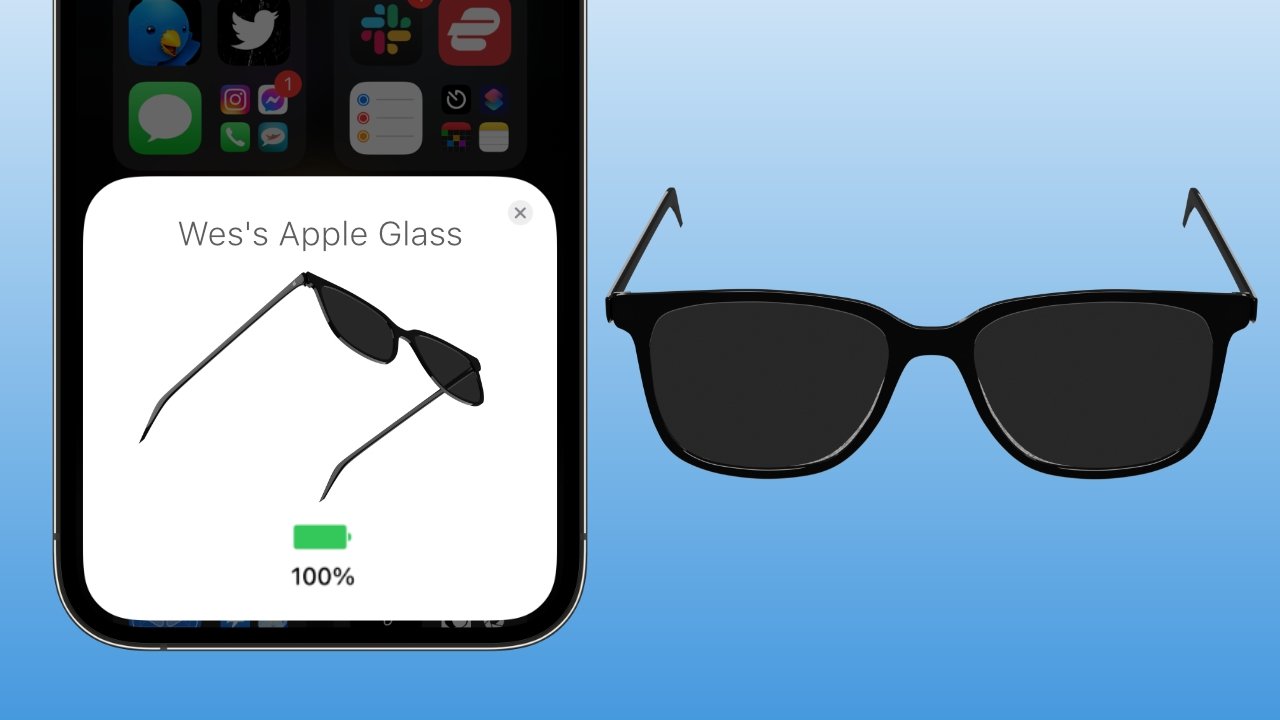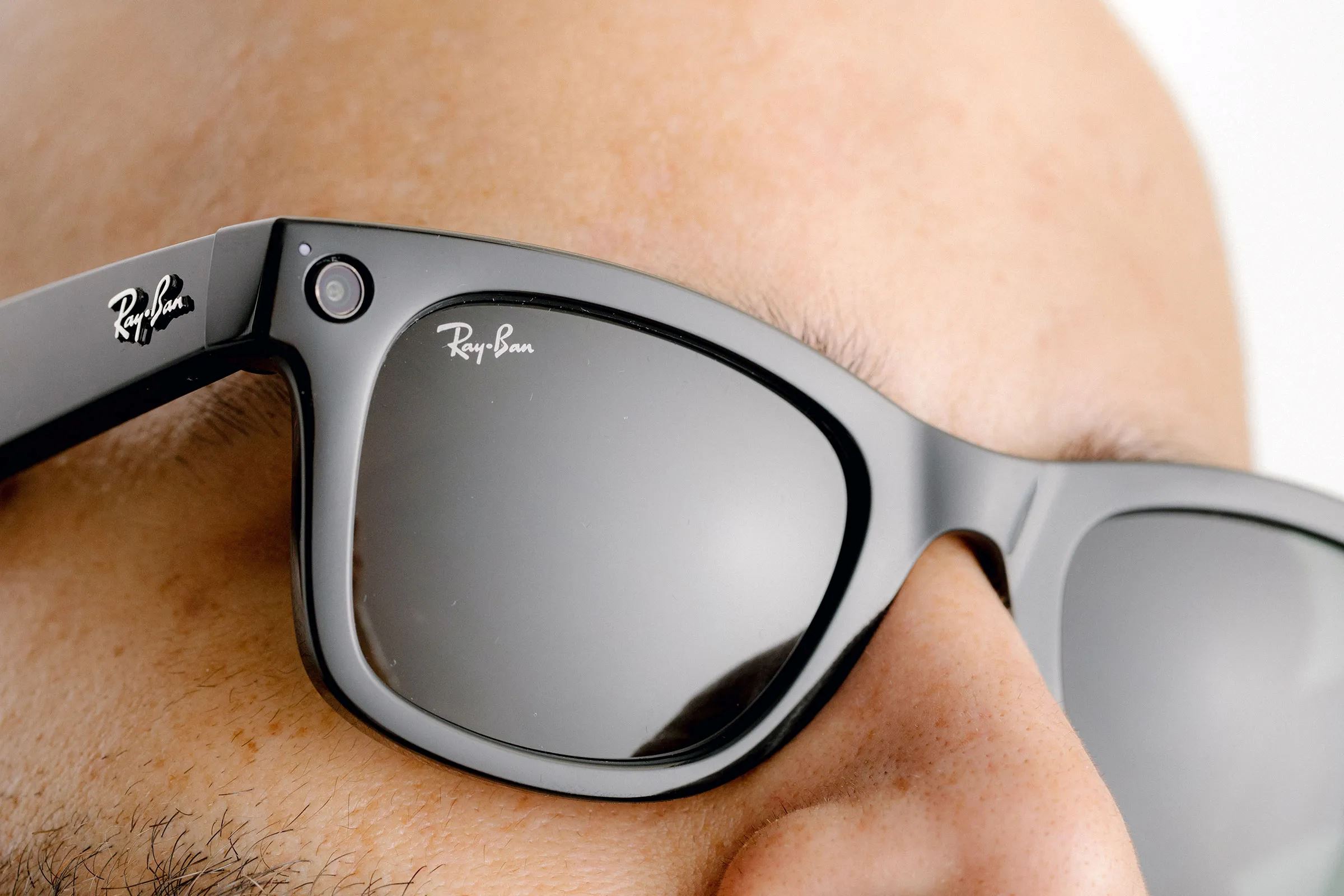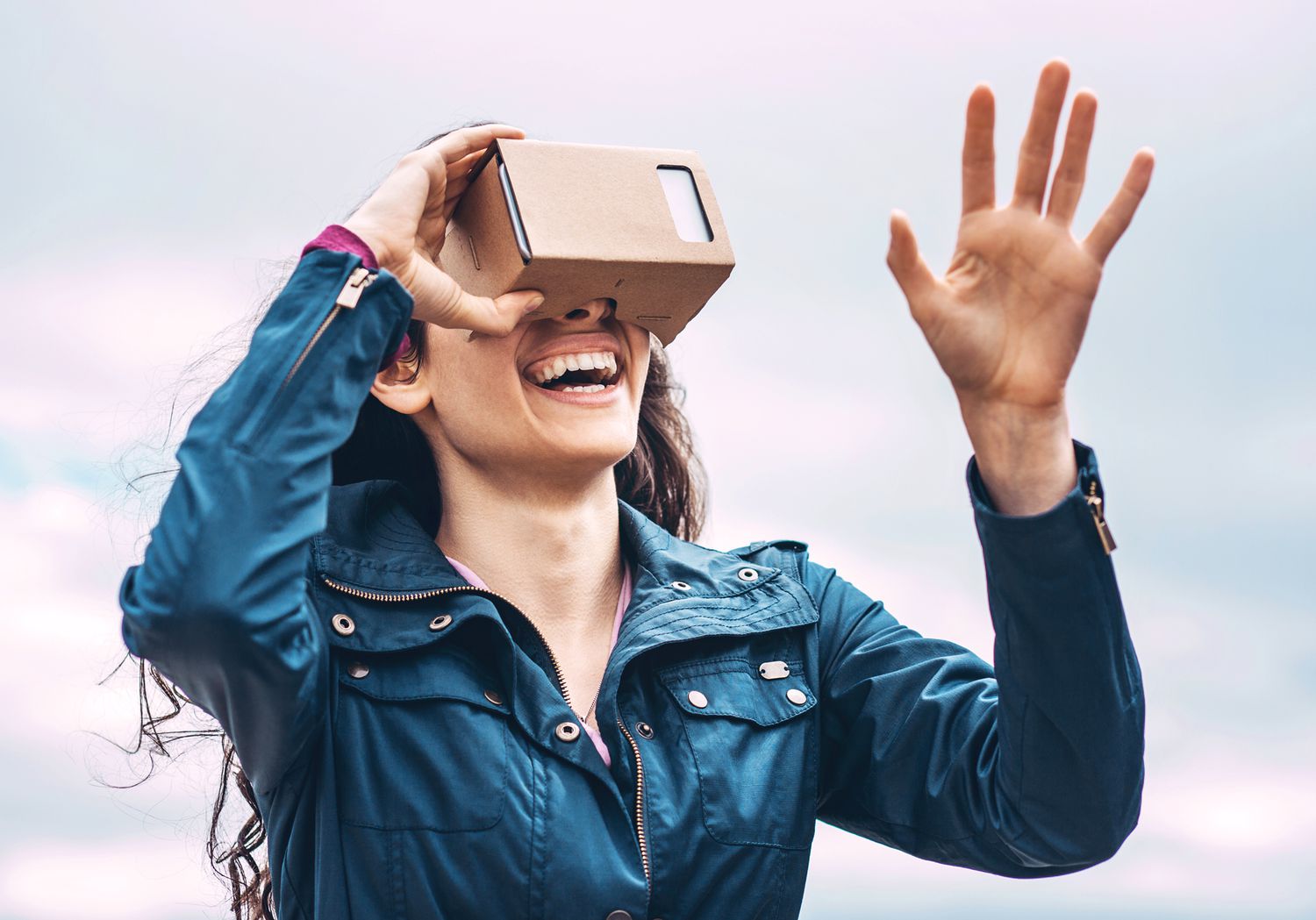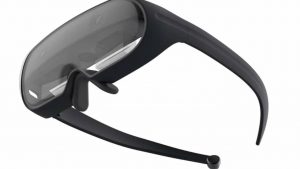Introduction
Smart glasses have revolutionized the way we interact with technology, blurring the line between the digital and physical worlds. Among the pioneers in this technology is Google, with its groundbreaking development of Google Smart Glasses. These innovative eyewear devices combine the functionality of a smartphone with a wearable display, allowing users to access digital information right in front of their eyes.
Google Smart Glasses represent a significant leap forward in wearable technology, bringing convenience and augmented reality experiences to users in a sleek and stylish form. With their futuristic design and impressive capabilities, these glasses have captured the imagination of tech enthusiasts and industry professionals alike. In this article, we will delve into the history, functionality, and potential applications of Google Smart Glasses, as well as examine their benefits and limitations.
The journey of Google Smart Glasses began in 2012, when the company unveiled its ambitious project known as Google Glass. This wearable gadget was equipped with a high-resolution display, camera, microphone, and various sensors, offering users a unique hands-free experience. Despite generating excitement, the first iteration of Google Glass faced some challenges due to privacy concerns and limited practical applications.
In subsequent years, Google made significant improvements to its smart glasses technology, refining the design, usability, and features. The latest version, known as Google Smart Glasses, incorporates advanced technologies such as voice recognition, gesture control, and augmented reality overlays. These enhancements have made Google Smart Glasses more intuitive to use and have opened up a whole new range of possibilities for interaction and productivity.
Google Smart Glasses work by projecting a virtual display right in front of the user’s eyes, providing an immersive experience that seamlessly blends the digital and physical worlds. The glasses connect wirelessly to a smartphone or other compatible devices, allowing users to access emails, messages, maps, and other applications without the need for a handheld device. The device can be controlled using a combination of voice commands, gestures, and touch controls on the frame of the glasses.
History of Google Smart Glasses
Google Smart Glasses have a rich history that traces back to the unveiling of Google Glass in 2012. This ambitious project introduced the world to the concept of smart glasses and sparked a wave of excitement and curiosity. With its sleek design and innovative features, Google Glass was positioned as a groundbreaking wearable technology that could revolutionize the way we interact with the world.
The original Google Glass prototype, known as Google Glass Explorer Edition, was released to a select group of developers and early adopters. These individuals had the opportunity to test and provide feedback on the device, helping Google refine its features and functionality. Despite generating interest among tech enthusiasts, the first iteration of Google Glass faced criticism and skepticism due to concerns about privacy and social implications.
Despite the challenges, Google continued its efforts to improve and evolve its smart glasses technology. In 2014, the company announced a new version of Google Glass, known as the “Enterprise Edition.” This iteration was specifically tailored for business and professional use, offering enhanced features such as longer battery life, improved performance, and compatibility with prescription glasses.
Over the years, Google has collaborated with various partners and expanded its reach in different industries to explore the potential applications of smart glasses. In 2019, Google partnered with Smith Optics, a leading eyewear manufacturer, to create a line of stylish and customizable smart glasses. This collaboration aimed to combine the cutting-edge technology of Google Smart Glasses with fashionable and comfortable frames to appeal to a wider audience.
Throughout its history, Google Smart Glasses have been met with both praise and criticism. While some applaud the potential for hands-free access to information and augmented reality experiences, others question the societal impact and potential privacy concerns associated with wearable camera technology. As a result, Google has been diligent in addressing these concerns and refining its product to ensure a balance between functionality and user privacy.
Today, Google continues to invest in the development of smart glasses technology, exploring new features and applications. With advancements in artificial intelligence, machine learning, and augmented reality, the future of Google Smart Glasses holds immense potential for enhancing productivity, communication, and entertainment.
How do Google Smart Glasses Work?
Google Smart Glasses operate using a combination of advanced technologies and sophisticated software. These devices utilize a compact display, sensors, and wireless connectivity to create an immersive and interactive experience for users.
The primary component of Google Smart Glasses is the display, which is positioned near the user’s line of sight. This microdisplay projects information onto a small screen, allowing the user to view digital content without obstructing their view of the real world. The display is designed to be transparent, providing a seamless overlay of digital information onto the user’s surroundings.
In terms of interaction, Google Smart Glasses offer multiple methods. Voice commands are a key feature, allowing users to control the device and access information by simply speaking. The glasses have built-in microphones that capture the user’s voice and transmit it to the device for processing. This feature enables hands-free interaction, making tasks such as accessing notifications, making calls, or searching the internet effortless.
Gestures also play a vital role in operating Google Smart Glasses. The glasses are equipped with sensors that detect movement, enabling users to navigate through menus, scroll through content, or perform specific actions by using intuitive gestures such as swiping or tapping on the frame. These gestures complement the voice commands and provide a natural and intuitive user experience.
Wireless connectivity is another crucial aspect of Google Smart Glasses. They can be connected to a smartphone or other compatible devices using Bluetooth or Wi-Fi, allowing users to access applications, receive notifications, and sync data seamlessly. The glasses can also connect directly to the internet, enabling real-time information updates and access to cloud-based services.
One of the key functionalities of Google Smart Glasses is their ability to capture photos and videos. The glasses are equipped with a built-in camera that enables users to capture moments without the need to hold a separate device. By simply issuing voice commands or tapping on the frame, users can take photos or record videos, adding an element of convenience and spontaneity to capturing memories or documenting experiences.
In addition to these features, Google Smart Glasses also incorporate advanced technologies such as augmented reality (AR) overlays. By overlaying digital information onto the real world, users can access contextual information, receive directions, view translations, and more. This AR functionality enhances the user’s environment, providing valuable and relevant information in real-time.
Overall, the combination of display technology, sensors, wireless connectivity, and intuitive interaction methods allows Google Smart Glasses to create a seamless and immersive experience that seamlessly blends the digital and physical worlds.
Key Features of Google Smart Glasses
Google Smart Glasses are packed with a range of innovative features that make them stand out in the world of wearable technology. These features not only enhance the user experience but also offer practical functionalities for various applications. Let’s explore some of the key features of Google Smart Glasses:
- Augmented Reality (AR) Display: The most prominent feature of Google Smart Glasses is the augmented reality display. This transparent display overlays digital information onto the user’s real-world view, offering an immersive and interactive experience.
- Voice Control: Google Smart Glasses utilize advanced voice recognition technology, allowing users to control the device through voice commands. Users can perform various tasks such as making calls, sending messages, or accessing information, all by speaking naturally.
- Gestures and Touch Controls: The glasses incorporate intuitive gestures and touch controls on the frame, enabling users to navigate through menus, scroll through content, or perform specific actions with ease.
- Built-in Camera: Google Smart Glasses come equipped with a built-in camera, allowing users to capture photos and record videos effortlessly. This feature eliminates the need for a separate camera or smartphone, making it convenient for users to document special moments or record important information.
- Wireless Connectivity: These glasses can connect to smartphones or other compatible devices wirelessly, enabling users to access applications, receive notifications, and sync data seamlessly.
- Real-Time Information: With an internet connection, Google Smart Glasses provide real-time access to information, including weather updates, news articles, navigation directions, and more. Users can stay connected and up-to-date without needing to reach for their smartphones.
- Customizable Design: Google has collaborated with renowned eyewear brands to create a range of stylish frames for the Smart Glasses. Users can choose from different designs and customize the glasses to suit their personal style and preferences.
- Long Battery Life: Google Smart Glasses are designed to have efficient power management, offering users a long battery life for continuous usage throughout the day.
- App Ecosystem: Google has developed a robust app ecosystem for its smart glasses, where developers can create and publish apps specifically designed for the device. This allows for a diverse range of applications, expanding the functionality and potential use cases of the glasses.
These key features combine to create a powerful and versatile wearable device that offers users a new and exciting way to interact with technology. From augmented reality experiences to seamless connectivity, Google Smart Glasses continue to push the boundaries of what is possible in the realm of wearable technology.
Benefits of Using Google Smart Glasses
Google Smart Glasses offer a wide array of benefits that enhance both personal and professional aspects of our lives. These innovative wearable devices are designed to augment our capabilities and provide seamless access to information and technology. Let’s explore some of the key benefits of using Google Smart Glasses:
- Hands-Free Convenience: One of the significant advantages of Google Smart Glasses is the hands-free user experience. By eliminating the need to hold a smartphone or other devices, users can access information, make calls, send messages, and perform various tasks with voice commands or intuitive gestures. This hands-free convenience allows for multitasking and increased productivity.
- Augmented Reality Experiences: Google Smart Glasses provide augmented reality (AR) overlays, enriching the user’s environment with digital information. Whether it’s receiving real-time navigation directions, translating foreign languages, or accessing contextual information, AR enhances our understanding and interaction with the world around us.
- Improved Accessibility: For individuals with visual impairments or certain disabilities, Google Smart Glasses can offer enhanced accessibility. With features such as voice control, real-time information, and navigational assistance, these glasses can make everyday tasks more accessible and inclusive.
- Efficient Information Access: By bringing digital information directly within the user’s field of view, Google Smart Glasses eliminate the need to constantly check a smartphone or computer. Users can quickly glance at notifications, emails, or important updates, ensuring they stay informed and connected without disrupting their workflow or activities.
- Enhanced Productivity: With the ability to access information and perform tasks seamlessly, Google Smart Glasses can significantly boost productivity. Users can quickly reference documents, follow instructions, or receive real-time data, enabling them to work efficiently and effectively in various professional fields.
- Hands-Free Photography/Videography: The built-in camera of Google Smart Glasses allows users to capture photos and record videos without needing to hold a separate camera or smartphone. This feature is particularly useful in situations where convenience and spontaneity in capturing moments are desired.
- Stylish and Personalizable: Google Smart Glasses are available in a range of stylish frames that can be customized to suit individual tastes and preferences. This personalization aspect ensures that users can wear the glasses confidently while integrating them seamlessly into their personal style.
- Potential for Innovation: Google Smart Glasses serve as a platform for innovation, with developers creating new applications and expanding the possibilities of wearable technology. As the ecosystem grows, the potential for new and exciting use cases will continue to emerge.
Overall, Google Smart Glasses offer a range of benefits that enhance convenience, functionality, and overall user experience. From hands-free convenience to augmented reality experiences, these innovative wearable devices are shaping the way we interact with technology and the world around us.
Potential Applications of Google Smart Glasses
Google Smart Glasses have the potential to be utilized across various industries and areas of our daily lives. With their advanced features and seamless integration of digital information, these wearable devices can enhance productivity, communication, and user experiences. Let’s explore some of the potential applications of Google Smart Glasses:
- Healthcare: In the healthcare industry, Google Smart Glasses can play a pivotal role in providing real-time patient information to healthcare professionals. Doctors and nurses can use the glasses to access patient records, review vital signs, and receive important alerts, allowing for more efficient and accurate decision-making. Additionally, these glasses can be used in telemedicine, enabling remote consultation and diagnosis.
- Education and Training: Google Smart Glasses can transform the way we learn and train. They can provide real-time information and guidance for students, enabling interactive and immersive experiences in various subjects. In professional training, these glasses can offer step-by-step instructions, hands-free access to reference materials, and virtual simulations.
- Manufacturing and Logistics: Google Smart Glasses can streamline operations in manufacturing and logistics by providing real-time information and guidance to workers. They can display assembly instructions, inventory details, and help with quality control checks. These glasses can also enhance warehouse logistics by providing workers with accurate pick-and-pack instructions and navigation guidance.
- Field Service Maintenance: Service technicians in industries such as telecommunications, energy, and equipment maintenance can benefit from using Google Smart Glasses. These glasses can overlay equipment manuals, schematics, and troubleshooting guides, allowing technicians to access critical information hands-free. Remote experts can provide immediate guidance through voice or video calls, reducing the need for in-person visits.
- Tourism and Hospitality: Google Smart Glasses can enhance the tourism and hospitality industry by providing a personalized and immersive experience for guests. They can offer real-time translations, assist with navigation, and provide information on landmarks, historical sites, or points of interest. Hotel staff can also benefit from these glasses, receiving notifications and instructions discreetly.
- Sports and Fitness: Athletes and fitness enthusiasts can use Google Smart Glasses to enhance their training and performance. These glasses can display real-time statistics, offer coaching tips, and track vital signs during workouts. They can also provide navigational assistance during outdoor activities such as hiking, cycling, or running.
- Entertainment and Gaming: Google Smart Glasses have the potential to revolutionize the entertainment and gaming industries. They can provide immersive augmented reality experiences in movies, concerts, or live events. In gaming, these glasses can overlay virtual elements onto the real world, creating interactive and engaging gameplay experiences.
These are just a few examples of the potential applications of Google Smart Glasses. As the technology continues to evolve and developers create new innovative solutions, we can expect to see these glasses used in even more diverse and exciting ways.
Concerns and Limitations of Google Smart Glasses
While Google Smart Glasses offer numerous benefits and exciting possibilities, there are also concerns and limitations that need to be addressed. It is important to be aware of these factors to ensure responsible and ethical use of this technology. Let’s explore some of the main concerns and limitations of Google Smart Glasses:
- Privacy: One of the primary concerns surrounding Google Smart Glasses is privacy. The built-in camera and microphone raise concerns about potential surveillance or unauthorized recording. Striking a balance between convenience and respecting privacy rights is crucial to avoid infringing upon the privacy of individuals.
- Security: As with any connected device, there is a potential for security vulnerabilities. Google must ensure that its smart glasses have robust security measures in place to protect user data and prevent unauthorized access to sensitive information.
- Social Acceptability: The use of smart glasses in public spaces raises questions of social acceptability. People may feel uncomfortable or perceive wearers as recording or monitoring them without their consent. Addressing these concerns through clear communication, guidelines, and user education is essential for wider acceptance of the technology.
- Reliance on Connectivity: Google Smart Glasses heavily rely on wireless connectivity for accessing information and performing tasks. Poor network coverage or connectivity issues can limit the functionality of the glasses, making them less effective in certain areas or situations.
- User Distraction: The immersive nature of Google Smart Glasses can potentially lead to user distraction, especially when interacting with digital content while performing tasks that require full attention. It is important for users to prioritize safety and be mindful of their surroundings when using these glasses.
- Battery Life: Despite advancements in battery technology, Google Smart Glasses still have limitations in terms of battery life. Long durations of continuous usage, particularly during resource-intensive applications or augmented reality experiences, may drain the battery quickly and require frequent recharging.
- Cost: Currently, Google Smart Glasses are relatively expensive compared to conventional eyewear and other wearable devices. The high cost may limit their accessibility and adoption, particularly for individuals or organizations on a tight budget.
- Regulatory and Ethical Concerns: The use of smart glasses raises regulatory and ethical concerns in specific contexts, such as certain work environments or sensitive areas where recording or photography is prohibited. Clear guidelines and adherence to ethical practices are necessary to address these concerns.
It is important for Google and users to acknowledge these concerns and actively work towards addressing them. By effectively addressing privacy, security, and social acceptance issues, Google Smart Glasses can continue to evolve as a valuable technology that enhances our lives while respecting individual rights and societal norms.
Comparison with Other Smart Glasses in the Market
Google Smart Glasses are not the only smart glasses available in the market. Several other companies have developed their own versions of smart glasses, each with its own unique features and capabilities. Let’s compare Google Smart Glasses with some of the other prominent smart glasses in the market to understand their similarities and differences:
- Microsoft HoloLens: Microsoft HoloLens combines augmented reality with a holographic display, allowing users to interact with digital content in a three-dimensional space. Unlike Google Smart Glasses, HoloLens is primarily targeted towards developers and enterprise applications, offering advanced capabilities for spatial mapping, hand tracking, and gesture recognition.
- Apple Glasses: Although not yet released, Apple is rumored to be working on their own smart glasses. While details are limited, it is expected that Apple Glasses will offer seamless integration with other Apple devices, a compact and minimalist design, and a focus on augmented reality experiences.
- Samsung Gear VR: Samsung Gear VR is a virtual reality headset that offers a fully immersive virtual reality experience. Unlike Google Smart Glasses, Gear VR requires a smartphone to function as the display and processing unit. This standalone device primarily focuses on entertainment and gaming applications.
- Vuzix Blade AR Smart Glasses: Vuzix Blade AR Smart Glasses are designed for both consumer and enterprise use. These glasses offer an augmented reality display, voice control functionality, and compatibility with popular virtual assistants. Similar to Google Smart Glasses, Vuzix Blade emphasizes hands-free access to information and communication.
- Sony SmartEyeglass: Sony SmartEyeglass features a transparent display that overlays information onto the user’s field of view. These glasses provide AR experiences, but with a heavier focus on notifications, messaging, and real-time information. The design of Sony SmartEyeglass is more robust and bulky compared to the sleek and lightweight design of Google Smart Glasses.
While each of these smart glasses has its own strengths and target audiences, Google Smart Glasses offer a compelling combination of features, usability, and integration with Google services. With their emphasis on augmented reality overlays, voice control, and a growing app ecosystem, Google Smart Glasses have established themselves as a versatile and accessible wearable device.
However, it is important to note that the smart glasses market is continuously evolving, with new technologies and devices being introduced regularly. As competition increases and technology advances, we can expect to see more innovative features and improvements in smart glasses across different brands.
Future of Google Smart Glasses
The future of Google Smart Glasses is filled with immense potential and exciting possibilities. As technology continues to advance and user demands evolve, Google is poised to make significant strides in the development and adoption of smart glasses. Here are some key aspects to consider regarding the future of Google Smart Glasses:
- Improved Design and User Experience: Google will likely focus on enhancing the design and user experience of its smart glasses. This includes making the glasses more lightweight, comfortable to wear for extended periods, and seamlessly integrating them into daily life.
- Advancements in Display and Augmented Reality: The display technology of Google Smart Glasses is expected to advance further, offering higher resolution and improved field of view. With enhanced augmented reality capabilities, users can expect more immersive and realistic overlays that seamlessly blend with the real world.
- Expanded App Ecosystem: The growth of the app ecosystem for Google Smart Glasses will play a crucial role in their future. As developers continue to create innovative applications, the glasses will be able to offer more diverse functionalities and cater to various sectors such as healthcare, education, and entertainment.
- Integration with Artificial Intelligence (AI) and Internet of Things (IoT): Google Smart Glasses will likely integrate with AI-powered personal assistants, enabling seamless voice-controlled interactions and providing personalized recommendations. Additionally, integration with IoT devices can extend the capabilities of the glasses, allowing users to control smart home devices or access data from connected sensors.
- Advanced Sensing and Biometric Capabilities: The future of Google Smart Glasses may involve incorporating advanced sensors and biometric technology. This can enable features such as real-time health monitoring, facial recognition for enhanced security, and gesture detection for more intuitive user interfaces.
- Collaboration and Partnerships: Google is expected to collaborate with more eyewear manufacturers and industry partners to improve the style, comfort, and practicality of its smart glasses. This collaboration can help ensure that the glasses appeal to a wider audience and have a broader range of customization options.
- Increased Affordability: As technology matures and economies of scale kick in, the cost of Google Smart Glasses is likely to decrease, making them more accessible to a larger user base. This increased affordability can drive wider adoption and integration into various aspects of daily life.
The future of Google Smart Glasses holds tremendous potential for transforming the way we interact with technology and the world around us. With ongoing advancements and user-driven innovation, these glasses are poised to become an integral part of our daily lives, enhancing productivity, communication, and entertainment in ways we may not have even imagined.
Conclusion
Google Smart Glasses have emerged as a pioneering technology that blurs the boundaries between the digital and physical worlds. These wearable devices offer a range of features and capabilities that enhance convenience, connectivity, and productivity. From their innovative display and hands-free control to the potential for augmented reality experiences, Google Smart Glasses have captured the imagination of tech enthusiasts and professionals alike.
While there are concerns and limitations surrounding privacy, security, and social acceptance, it is important to acknowledge and address these issues as the technology continues to advance. By prioritizing user privacy, implementing robust security measures, and promoting responsible use, Google can ensure that its smart glasses are not only efficient but also respectful of individual rights.
In the future, Google Smart Glasses are poised to undergo significant developments and improvements. Advancements in display technology, augmented reality, and integration with artificial intelligence and IoT will enhance the user experience and expand the potential applications of these glasses across various industries and sectors.
The journey of Google Smart Glasses has only just begun, with countless possibilities waiting to be explored. As the technology evolves, it is crucial to foster collaboration, encourage innovation, and prioritize user needs in order to create a sustainable and user-friendly smart glasses ecosystem.
Ultimately, the future of Google Smart Glasses holds promise for a more connected, immersive, and productive future, where we seamlessly interact with technology in ways that enhance our lives and reshape the way we perceive and engage with the world around us.







